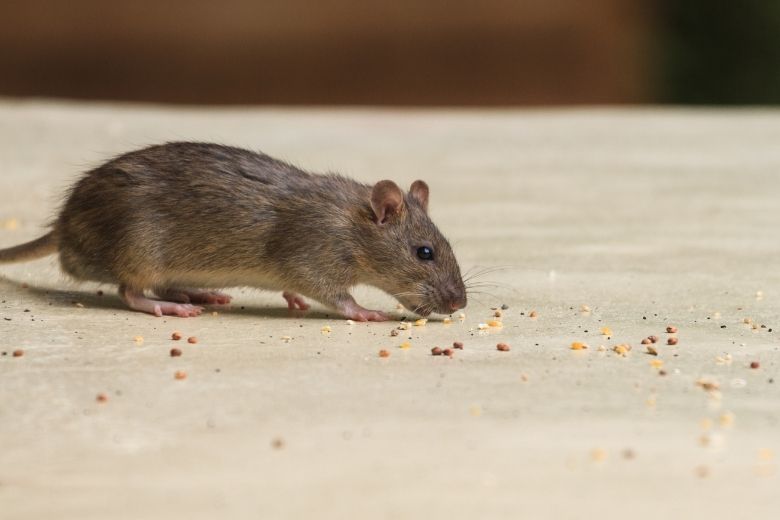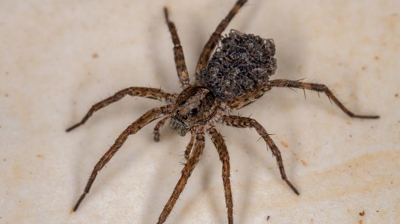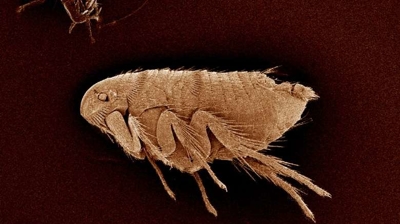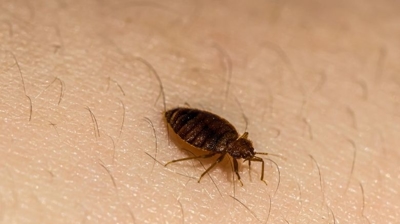
Are Mice Harmful?
Mice can be considered harmful in several ways, especially when they come into close proximity to humans and human-inhabited environments:
- Disease Transmission: Mice are known to carry and transmit diseases. They can harbor pathogens such as bacteria, viruses, and parasites, including salmonella and hantavirus, which can be transmitted to humans through contact with their urine, feces, or saliva. Hantavirus, in particular, is a potentially life-threatening disease that can be contracted by inhaling aerosolized particles from mouse droppings or urine.
- Contamination of Food and Food-Handling Surfaces: Mice can infest and contaminate food storage areas, pantries, and kitchens. Their droppings, urine, and hair can taint food products and food-handling surfaces, leading to potential foodborne illnesses in humans.
- Allergens: Proteins found in mouse urine and dander can trigger allergic reactions in some individuals. Allergic responses may manifest as asthma symptoms or skin rashes.
- Nuisance and Psychological Stress: The presence of mice in homes or businesses can cause psychological stress, as their activity and the fear of disease transmission can be distressing to people. Dealing with a mouse infestation can be a significant nuisance.
- Damage to Stored Goods: Mice can cause considerable damage to stored goods, such as clothing, documents, and personal belongings, by nesting in these items and chewing on them.
- Property Damage: Mice have strong teeth that continuously grow, leading them to gnaw on various materials. They can cause damage to structures, wiring, insulation, and even vehicles. In homes and businesses, this gnawing behavior can lead to costly repairs and pose a fire hazard when they chew on electrical wiring.
- Reproductive Potential: Mice are prolific breeders, with the ability to reproduce rapidly. A small population of mice can quickly multiply into a large infestation, making them difficult to control.
Due to the potential health risks and economic consequences associated with mouse infestations, it is important to take preventive measures to keep mice out of living and working spaces, and to address infestations promptly if they occur. Effective mouse control and sanitation practices are crucial in minimizing the dangers posed by mice.
Learn more: Do Mice Bite?
Mouse Removal
Getting rid of mice is critical for multiple health, structural, and safety reasons. Mice are not just a nuisance—they pose serious risks to homes, businesses, and human health:
- Health Risks: Mice are carriers of a variety of diseases, some of which can be transmitted directly to humans or indirectly through contamination of food and surfaces. These include Hantavirus, which can cause severe respiratory illness, salmonella which is spread through contaminated food or surfaces, and leptospirosis which is transmitted through mouse urine and affects the kidneys and liver, and allergens such as mouse droppings, urine, and dander, which can trigger allergic reactions and asthma attacks.
- Food Contamination: Mice will invade kitchens, pantries, and food storage areas. They contaminate food with droppings, urine, and hair, making it unsafe to eat and creating a risk of foodborne illnesses.
- Structural Damage: Mice gnaw constantly to keep their teeth trimmed. This can damage electrical wiring, increasing fire risk, as well as insulation, drywall, wooden structures, stored items, fabrics, and furniture.
- Rapid Reproduction: Mice breed quickly, with a single pair potentially producing dozens of offspring in a few months. A small infestation can escalate into a serious problem very quickly if left unchecked.
- Infestation Signs Are Hard to Detect Early: Mice are nocturnal and elusive, meaning an infestation can grow for weeks or months before you notice droppings, chewed wires, or gnaw marks. Early removal prevents costly damage and larger infestations.
- Psychological and Social Impact: A mouse infestation can create stress, fear, and embarrassment for homeowners or business operators. In commercial settings, it can damage reputation and compliance with health regulations.
- Pest Control Efficiency: Our professional exterminators can identify entry points, nesting areas, and food sources, ensuring the infestation is completely eradicated. DIY methods often only provide temporary relief and can allow populations to rebound.
Mice are more than just an inconvenience—they are a serious health hazard and a threat to your property. Early and thorough removal is essential to protect health, prevent damage, and stop infestations from escalating.
Learn more: How To Get Rid Of Mice
Mouse Control
Hiring our professionals for mouse control offers significant advantages over DIY methods, particularly because mice are not only persistent but also highly adaptable pests. Here’s why our professional mouse control is the best choice:
- Accurate Identification and Inspection: Our professional pest control technicians don’t just see “a mouse problem”—we identify the species, determine entry points, and locate their nesting areas. This is critical because effective control depends on knowing exactly where and how the mice are infiltrating your property. DIY traps often miss the bigger picture, allowing infestations to continue unchecked.
- Effective and Targeted Treatments: Our professionals use methods and products that are more potent and precisely applied than over-the-counter traps or baits. This includes strategic bait placement to minimize risks to children and pets, environmentally appropriate rodenticides when necessary, and non-toxic options like snap traps or electronic traps for sensitive settings. Our targeted professional treatments reduce the likelihood of mice becoming resistant or avoiding traps—a common problem with home methods.
- Prevention of Disease and Contamination: Mice carry pathogens that can cause serious health issues, including Salmonella, Hantavirus, and Leptospirosis. Our professionals minimize exposure by using safe, hygienic methods for trapping and removal, reducing the risk of contamination to your home or business.
- Damage Mitigation: Mice chew through wires, insulation, and structural materials. Left untreated, this can cause fire hazards, electrical damage, and costly repairs. Our professionals not only remove mice but also advise on sealing entry points and safeguarding vulnerable areas to prevent future damage.
- Long-Term Control and Monitoring: One-time DIY solutions often fail because mice reproduce quickly (a single female can produce dozens of offspring per year). Our professional control programs include follow-up visits to ensure elimination, monitoring systems to detect new activity early, and ongoing prevention strategies to keep mice from returning.
- Peace of Mind: Knowing that our trained technicians are handling your infestation removes stress and uncertainty. You’re not guessing if traps are working, or risking exposure to diseases—our professionals handle it efficiently and safely.
Mice reproduce rapidly, spread disease, and can cause serious property damage. DIY solutions may offer temporary relief, but our professional mouse control ensures safe, thorough, and long-lasting results. It’s an investment in health, safety, and the integrity of your home or business.
Mouse Exterminators
Hiring our local exterminators to get rid of mice offers several key advantages that go beyond basic pest removal. Our local professionals understand the unique rodent issues specific to your region—such as the most common mouse species, seasonal activity patterns, and typical entry points in area homes and businesses. This regional expertise allows us to use more effective, targeted control strategies rather than generic treatments that may not work as well in your environment.
Our local exterminators are also known for their faster response times. Because we operate nearby, we can often provide same-day or next-day service, which is critical when a mouse infestation is actively spreading or causing damage. We're familiar with local building styles, codes, and neighborhood layouts, so we know where mice are most likely to hide and how they’re gaining access.
In addition, our local pest control team provides more personalized service and accountability. We build long-term relationships within our community, so our reputation depends heavily on customer satisfaction and lasting results. We also provide ongoing protective visits and maintenance plans to ensure that the infestation doesn’t return. Supporting our local exterminator team also means benefiting from professionals who genuinely care about local health, safety, and property protection.
Washington DC Mouse Control || Baltimore MD Mouse Control || Alexandria VA Mouse Control
Mouse Solutions
Our exterminators use Integrated Pest Management (IPM) to control mice because these rodents reproduce rapidly, contaminate food, spread disease, and can cause structural damage by gnawing on wires, insulation, and building materials. IPM begins with a thorough inspection to identify signs of activity, including droppings, gnaw marks, nests, and potential entry points, as well as environmental factors that attract mice, such as accessible food, water, and shelter. Management strategies focus on habitat modification, including improving sanitation, removing clutter, securing food and waste, and eliminating sources of water. Physical exclusion, such as sealing cracks, gaps, and vents, is used to prevent entry, while targeted interventions, including traps and selective rodenticides, are applied strategically and only when necessary. Ongoing monitoring allows our exterminators to track activity, evaluate the effectiveness of control measures, and detect reinfestation early. By integrating inspection, habitat management, exclusion, selective treatment, and monitoring, IPM provides a long-term, effective, and environmentally responsible approach to managing mouse populations.
Where Are Mice Found?
Mice are highly adaptable rodents and can be found in a wide range of habitats and environments around the world. Here are some common places where you might encounter mice:
- Urban and Suburban Areas: Mice are notorious for their adaptability to human environments. They can be found in and around homes, buildings, gardens, and urban green spaces. They often seek shelter and food in human structures, making them common pests in urban areas.
- Fields and Grasslands: Mice are often found in natural grassy and open areas. They build nests in burrows or use vegetation for cover. These habitats provide a good source of food, such as seeds and insects.
- Forests: In forested areas, mice can be found in leaf litter, under fallen logs, and in the ground burrows. They are an important part of the forest ecosystem, both as prey for predators and as seed dispersers.
- Farms and Agricultural Settings: Mice can be a significant problem in agricultural areas, where they feed on crops and stored grains. They may also inhabit barns, sheds, and other farm buildings.
- Wetlands: Some mouse species are adapted to wetland environments, living in marshes and along the edges of ponds and lakes. They build nests in vegetation and feed on aquatic plants and insects.
- Deserts: Certain species of mice are adapted to arid desert environments. They are well-suited to conserving water and can be found in burrows or crevices in the sand.
- Mountainous Regions: In mountainous areas, mice may inhabit alpine meadows, rocky outcrops, and high-altitude forests. They are adapted to colder climates and may burrow under snow during winter.
- Tundra: Some mice species are found in the Arctic tundra, where they have adapted to the extreme cold and limited vegetation. They often dig burrows to provide shelter from the harsh conditions.
The specific species of mice and their distribution can vary depending on the region and local environmental conditions. While mice are widespread, their presence in a particular location can be influenced by factors such as food availability, shelter, and the presence of predators. In urban areas, they are often attracted to human structures due to the availability of food and shelter, making them a common pest.
Mouse Life Cycle
The life cycle of mice, like many rodents, consists of several distinct stages, from birth to adulthood. Here is the life cycle of mice:
- Birth: Mice are born after a gestation period of approximately 19 to 21 days, depending on the species. A mother mouse, also known as a doe, gives birth to a litter of baby mice, known as pups. A typical litter size can range from 2 to 12 pups or more, depending on the species and environmental conditions.
- Infancy: Newborn mouse pups are blind, hairless, and completely dependent on their mother for nourishment and care. They have closed ears and are highly vulnerable to predation. The mother provides them with milk and keeps them warm in the nest.
- Weaning: As the pups grow, they open their eyes and develop fur. Around 2 to 4 weeks of age, they begin to transition from a milk-based diet to solid food. This period is known as weaning, and the mother may start to discourage them from nursing.
- Juvenile Stage: After weaning, the pups enter the juvenile stage. They become more active, start exploring their environment, and socialize with their littermates. This stage typically lasts until they are around 6 to 8 weeks old.
- Sexual Maturity: Mice reach sexual maturity at different ages depending on the species. In general, this occurs at around 5 to 8 weeks of age for females and slightly later for males. At this point, they can reproduce.
- Reproduction: Once they reach sexual maturity, mice can start breeding. They have a high reproductive rate, with the ability to produce multiple litters in a year, especially under favorable conditions. The gestation period for female mice is relatively short, and they can become pregnant shortly after giving birth.
- Adulthood: Adult mice are fully independent and continue to explore their environment in search of food and shelter. They may establish their own territories, either solitary or in social groups, depending on the species.
- Lifespan: The lifespan of a mouse can vary depending on factors such as species, environmental conditions, and predation. In the wild, many mice have a relatively short lifespan, often less than a year due to predation and harsh conditions. In captivity, under controlled conditions, some mice can live for up to 2 to 3 years.
The life cycle of mice can be influenced by various factors, including food availability, predators, and environmental conditions. Their reproductive capacity and adaptability contribute to their success as a species, but they are also prey for many other animals in the ecosystem. In human-inhabited areas, their prolific breeding and adaptability make them a common pest.
Types of Mice

Hear From Our Happy Customers
-
"Great Communication"
Tech was on time, communication was great, and he accommodated my needs.
- Alonzo W. -
"Exceeds Expectations"
I can’t say enough positive things about this company... The tech that came out, Jarvis went above and beyond my expectations. Thank you guys, I will continue using your services.
- Jake M. -
"Fantastic & Patient"
Jarvis was fantastic and patient. He answered my questions with an in-depth explanation and addressed all of my areas of concern. Would love for him to be my assigned tech going forward. Well done!
- Yonnette M. -
"Wonderful Service"
Wonderful service. Jarvis is great. Took care of everything I needed. Thank you!
- Henry P. -
"Professional & Considerate"
I’m pleased with Miche services. Jarvis came today. Professional and considerate. Thank you!
- Judy B. -
"Very Knowledgeable"
The tech that arrived was courteous, professional, and very knowledgeable. He was Great.
- Uerial I.




